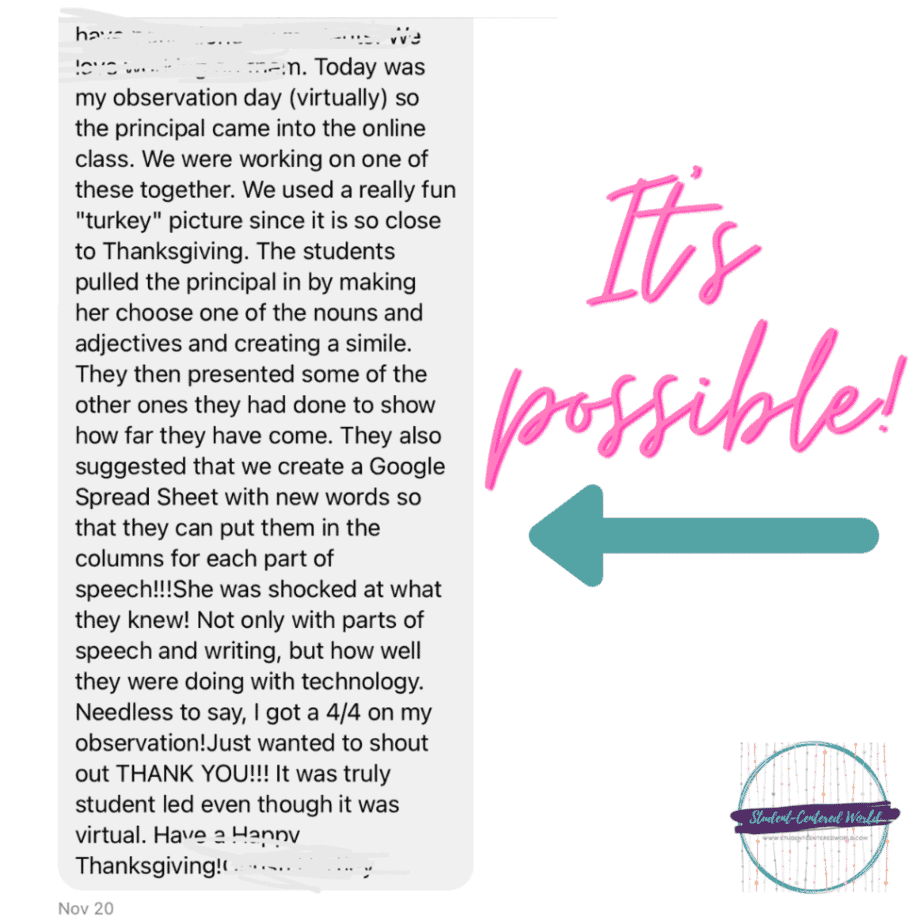NIET Observation Success in the 21st-Century Classroom
There are specific elements to keep in mind when preparing for a NIET Observation. The NIET Teaching Standards Rubric, based on research-based criteria, makes it easy to give feedback regarding a teacher’s instruction and encourages collaboration around a shared goal that corresponds with student performance.
NIET Observation criteria aim to produce a concise, accurate, and reliable observation that helps the process of learning.
The National Institute for Teaching Excellence/ NIET observation model
The following key points are the main elements of the NIET observation model:
-The observation process is focused on providing feedback, not judgment. Feedback occurs throughout the observation – before, during, and after the lesson.
-An observation should be about how a teacher interacts with students to maximize learning opportunities. It should not simply highlight that content has been covered or that attendance levels are high.
-An observation should be a conversation about teaching practice and student learning. It is not just one person talking and the other person taking notes.
-An observation should not be a parent/teacher conference, but an opportunity for teachers and administrators to work collaboratively on student achievement.
-The process of feedback is as important as the end product; feedback should be given to the teacher in a constructive way that assists them in their development.
In addition, there are specific elements that teachers must demonstrate for it to be said that they have achieved the standard. The specific elements are what teachers should be looking for when observing another teacher.
The 6 universal teaching standards are:
– Promoting the health, safety, and well-being of students
– Providing high-quality student engagement in learning
– Being assertive about promoting equity, access, and inclusion
– Being accountable for sound management of students’ learning
– Monitoring and evaluating student progress
– Working collegially with colleagues, parents/caregivers, and the community.
The six universal teaching standards are organized into three core categories: Engagement, Management, and Professional Learning. Every standard is observable in every lesson regardless of the subject being taught.
The following key points are the main elements of the NIET observation model:
- Teachers and administrators will meet during the observation to determine whether each standard has been met. Teachers should expect feedback on their performance as well as to be asked for further information about how they meet that particular standard if it is not completely clear from what they do in the lesson.
- An observation can be a conversation about what is happening in a teacher’s lesson rather than simply an opportunity to monitor whether each standard is met or not.
- The focus of a classroom observation should be on student learning and social interactions that take place during the lesson, although it may be necessary for administrators to observe how the teacher manages student behavior during an observation although this is not recommended.
- Administrators should be clear about what they are looking for when they see a lesson so that the observation will be focused on what matters – student learning and social interactions.
- The universal teaching standards provide some guidance for administrators but do not prescribe particular results or actions.
NIET Observation Checklist and Expectations
For a teacher who is taking place in a NIET observation, there are specific elements to keep in mind. The idea is to make sure the process of observation can be a supporting and positive learning experience for both the observer and the teacher.
- Prepare the lesson plan
- Have a conversation with students
- Engage students in learning
- Teach what is on the curriculum/syllabus
- Evaluate the lesson and progress of students
- Monitor student behavior during class time
- Explain your actions to the administrator. Explain why you taught that lesson in that way and how it helped students.
The following points are examples of what to expect during a NIET observation:
– The administrator should ask you about your role as a teacher, including the three categories of universal teaching standards, what each one means, and where they can be found.
– They may refer to the six universal teaching standards throughout the observation.
– The administrator should not tell you what to do during a lesson, but him/her needs to listen and ask questions about your actions as a teacher.
– This new process can take some time to become familiar with, so be patient with yourself and each other.
– The administrator should be clear about what he/she is looking for when they observe
– This observation should be focused on student learning and social interactions.
– It is important for administrators to talk with teachers about their observations without any kind of judgment
– Administrators should be prepared for a lesson and they must be familiar with the standards before they go in to observe a teacher.
– Administrators can work together with teachers on planning lessons or coaching them before an observation.
– Evaluation of student progress is not a component of this process, but teachers need to be able to reflect on student learning during an observation.
Getting Help with Your NIET Observation
If your school follows NIET for observations, you are in luck. Helping teachers rock in the classroom is my forte.

This article was originally published on April 16, 2021





